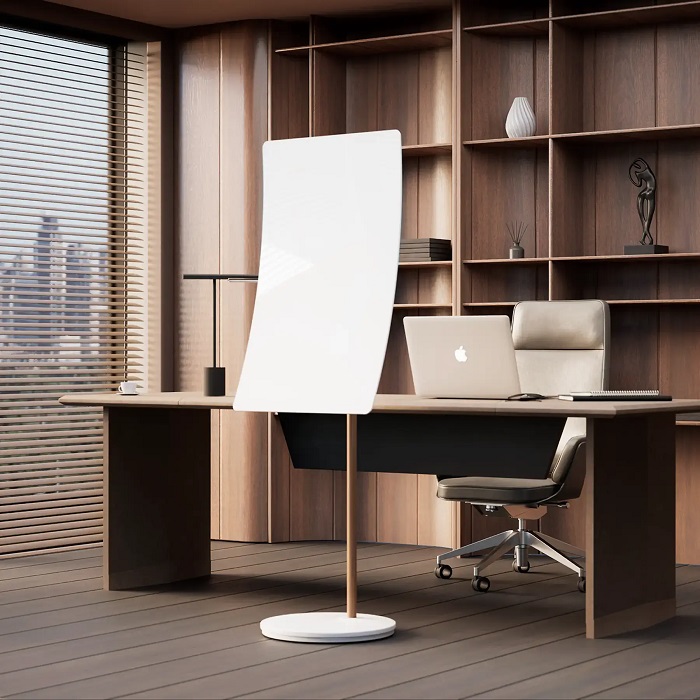There are a number of benefits to a curved board that are worth learning about before purchasing.
1. What is a curved board, and how does it differ from a traditional flat board?
- A curved board features a surface that is designed with a slight curvature, typically meant to provide ergonomic benefits and enhance user interaction. Unlike flat boards, curved boards align better with the natural field of vision and body posture, reducing strain during prolonged use.
2. What are the benefits of using a curved board?
- Curved boards reduce eye strain, neck, and back discomfort associated with prolonged use of flat screens or whiteboards. The ergonomic curvature promotes a more natural interaction, encouraging better posture and less fatigue, which can increase productivity and creativity.
3. Are curved boards suitable for all environments (offices, classrooms, etc.)?
- Yes, curved boards are versatile and can be used in various settings, from office boardrooms and meeting spaces to classrooms and creative studios. They are particularly beneficial in environments where people interact with visual content for extended periods.
4. Can curved boards be used for digital displays?
- Absolutely! Many curved boards are designed to be compatible with digital technologies, allowing them to serve as interactive whiteboards or presentation screens. They are particularly useful for presentations, virtual meetings, and collaborative brainstorming.
5. Do curved boards require special installation or maintenance?
- While installation may be slightly different from a traditional flat board, most curved boards are designed to be easy to install with standard mounting hardware. As for maintenance, they are usually low-maintenance, requiring only basic cleaning to keep the surface clear and functional.
6. What materials are curved boards made of?
- Curved boards can be made from a variety of materials, including glass, acrylic, or high-quality composite boards. The material depends on the collection and the intended use, with premium options like tempered glass offering a sleek, durable surface.
7. Are curved boards more expensive than traditional boards?
- Generally, yes. The innovative design and ergonomic benefits of curved boards, along with premium materials, can make them more expensive than flat boards. However, the added value in comfort, productivity, and design may justify the price for many users.
8. Can curved boards be used for writing or drawing?
- Yes, curved boards are designed to accommodate traditional markers and dry-erase pens, just like flat boards. Some curved boards also feature special coatings to enhance writing performance and make erasing easier.
9. Are curved boards available in different sizes?
- Yes, curved boards come in various sizes to fit different spaces, from small portable options to large-scale boards suitable for meeting rooms or classrooms.
10. How do I choose the right curved board for my needs?
- Consider factors such as the intended use (presentation, collaboration, brainstorming), the space available, and whether you need additional features like digital interactivity. Choosing the right size, material, and curvature angle based on your environment will help you maximize the benefits of the curved board.
11. Can curved boards be used in combination with other technologies, like projectors or video conferencing equipment?
- Yes, many curved boards are designed with integration in mind, allowing them to work seamlessly with projectors, video conferencing equipment, or interactive whiteboard systems. This makes them ideal for modern business or educational environments.
12. What is the lifespan of a curved board?
- With proper care and maintenance, a high-quality curved board can last for many years. The longevity will depend on factors like the material, usage frequency, and how well the board is maintained.
